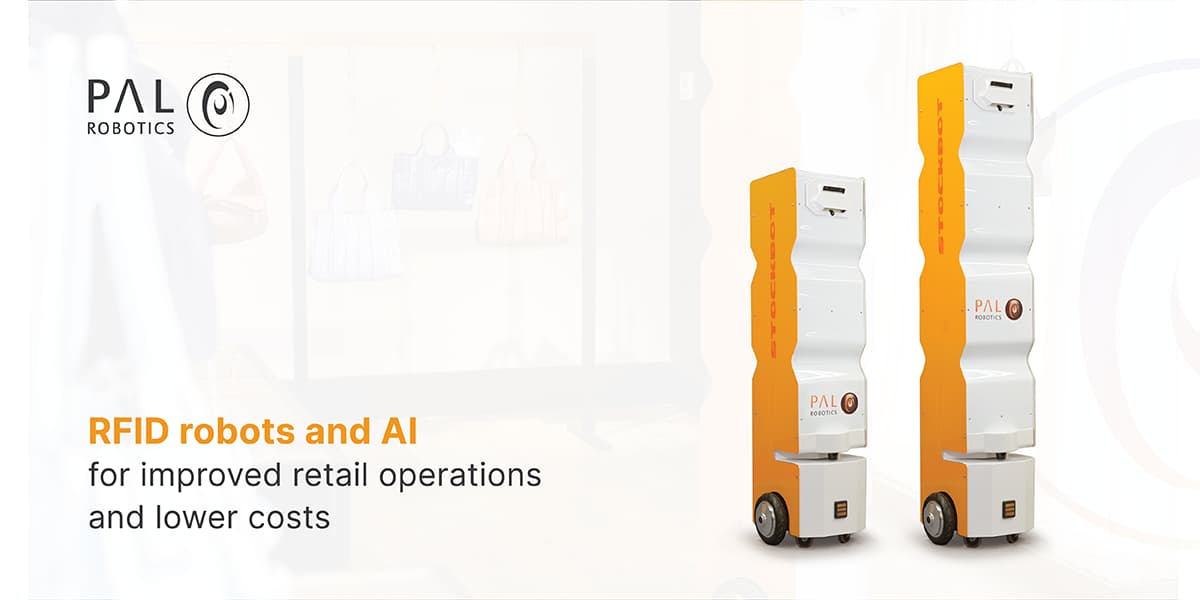Technology for retail: AI-driven RFID
RFID is a technology well known for enabling retailers to track their inventories. Used together with Artificial Intelligence (AI) the technology is able to contribute to improved retail operations and lower costs. AI in retail operations helps automate inventory management, the production of money maps, and pick lists, improve demand prediction, and much more. Here we talk more about the AI capabilities of RFID robots, and some of the benefits of combining RFID and AI for your retail business.
AI capabilities of RFID robots including SLAM and obstacle avoidance
AI contributes to the basics of how RFID robots function in your retail business. For example, in robot navigation through SLAM (simultaneous localization and mapping) in stores or warehouses, and for obstacle avoidance of people and objects.
Robot navigation in stores and warehouses using SLAM
RFID robots include additional sensors, in particular Lidar sensors, and cameras, enabling them to perform SLAM – simultaneous localization of their own location and mapping of any area. SLAM also includes Spatial AI, the spatial reasoning that allows robots to operate in general ways where they are, and helps them to understand their environment, such as the store or warehouse, better.
Obstacle avoidance in retail environments
RFID robots navigate on the shop floor or warehouses freely by avoiding fixed and moving obstacles and taking the shortest route possible to reach their destination. This is done by path planning in advance, as well as by online adjustments in real-time in order to react to moving obstacles such as workers and customers in store. Machine learning and AI are part of both of these functions to make the most out of the data obtained by the different sensors.
To ask more about how our RFID inventory tracking and data collection solution StockBot is ready to help your business become more efficient and reduce stock loss, get in touch with our team now.
The benefits of RFID and AI for your retail business
AI-enabled robots also bring a multitude of benefits to retail businesses, by optimising all stages of inventory management, and helping with the picking and packing process, as well as aiding data collection for reporting purposes.
Software shielding to determine item location
For inventory tracking, it’s important to know the items in store as well as where those items are located. Staff in the store should be able to easily identify items that need to be replenished on the shop floor, ensuring that items in stock are available for purchase.
Software shielding reduces the need for any physical shielding in stores – which is physical alterations so that RFID readers are able to distinguish between the locations of RFID tags in different areas of the store.
Thanks to the navigation system, PAL Robotics’ AI-enabled RFID solution, StockBot already distinguishes between products in the warehouse and on the shop floor. This allows differentiation between a warehouse or store room and the sales floor of a store, without the need for physical shielding installations.
Picking and packing assisted by AI
The picking and packing process is an area that presents numerous challenges to retailers and can often benefit from improved efficiencies. RFID tags on products help retailers to track items throughout the picking process, which in turn helps prepare orders or easier packing – reducing inefficiencies throughout the whole process. AI-powered RFID robots can be integrated into the store’s ERP or warehouse management system and can also automate communication to workers on the status and location of items for picking and packing.
AI at all stages of inventory management
AI can be used at every stage of inventory management. For example, in inventory management via RFID robots, AI can help to order based on demand and be able to react to situations such as low stock or out-of-stock. Inventory management assisted by AI allows the creation of demand forecasts based on real-time data, and most importantly, as the AI used learns more it constantly improves its forecasts and in turn becomes more efficient.
Using AI for demand prediction
Following on from this – AI also has a part to play in demand forecasting accuracy, by helping to predict for example increases in sales based on current trends. AI enables automated analysis of demands to help to identify current and future trends. For RFID robots, such forecasts can be produced by pressing a button.
AI-aided money mapping in store
One of the main challenges in effective money-mapping is data, and AI helps to make money-mapping more accessible to retailers through the creation of data. Sales data for example, helps to determine product displays that have been successful. Thanks to AI, RFID robots can produce and update a store map automatically. The store map is then combined with sales data to create a money map.
PAL Robotics’ RFID robot StockBot: set up in one day
Our StockBot robot automates daily inventory tracking and provides data to help with decisions, as a result of AI. Our solution is the most mature in the inventory tracking solutions market. This enables us to provide retailers with the latest technological advances in robotics, to solve their needs and improve their efficiency. The platform provides accurate stock information to smartly manage stores, while seamlessly integrating with retailers’ systems. StockBot is ready to use with a single setup and without changing the layout of the store or warehouse.
If you would like to learn more about our retail robot StockBot, take a look at our blog about robotics and technology to read more. Don’t hesitate to get in touch with our team of experts to ask more about StockBot’s capabilities for improving operations in your store or warehouse, or to book a demo.
